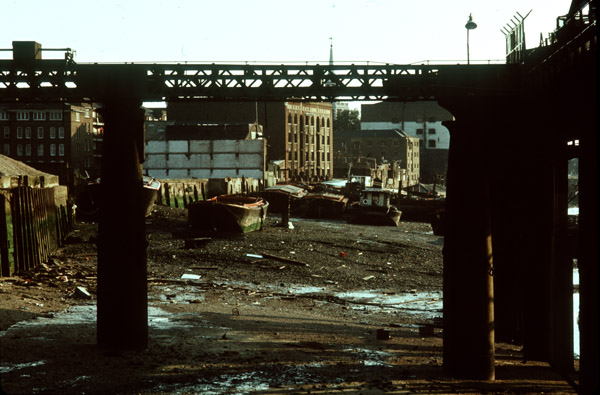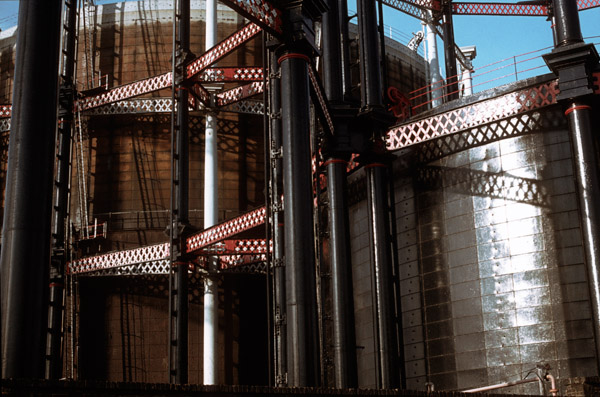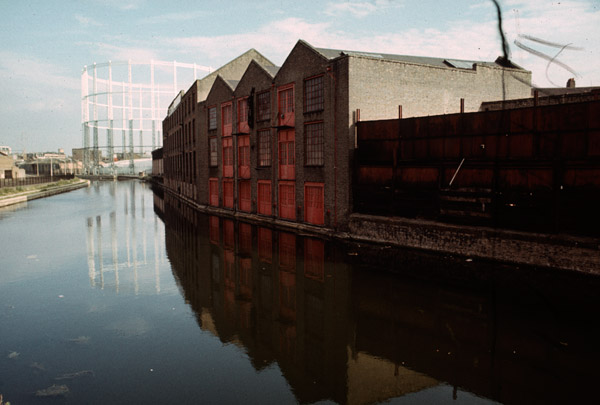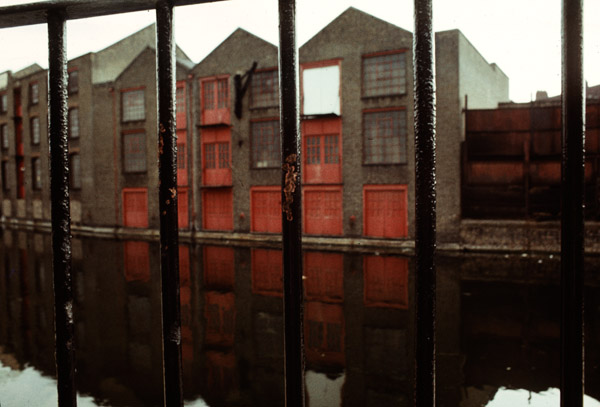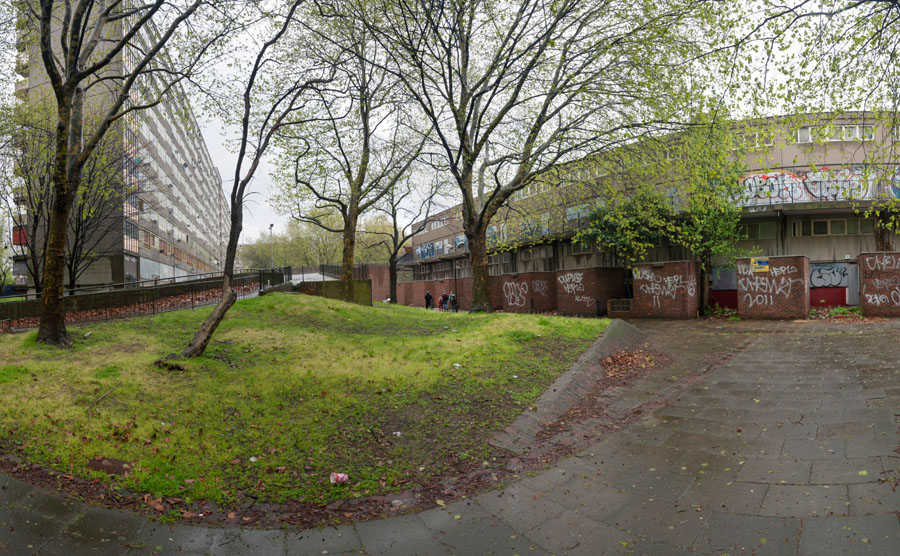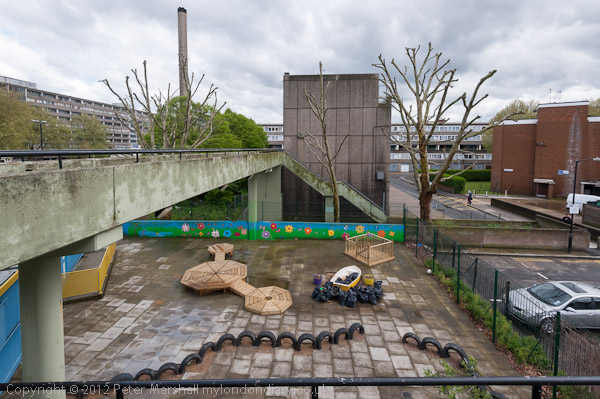I took quite a lot of colour images in the 1970s, though relatively little of it is of much interest to me now. I’d taken some in the 1960s too, before I became a photographer, though I had some aspirations, if no idea about how to do it. A girl friend when I was sweet seventeen and had no idea much about anything was beginning a career as a model and I took most of a 36 exposure Agfa transparency film of her in one on the cherry trees in my back garden. It wasn’t the reason why our relationship went nowhere – our tastes were very different and she was attracted to older men with money.
I couldn’t afford film and processing then (or girl friends) and mostly I took just a few pictures on a holiday. Things changed when I began teaching when I was around 26, as not only did I have a little money, but I’d also got a largish flat in a New Town, but had learnt the rudiments of black and white processing and could take over the kitchen after dinner to process films and make prints.
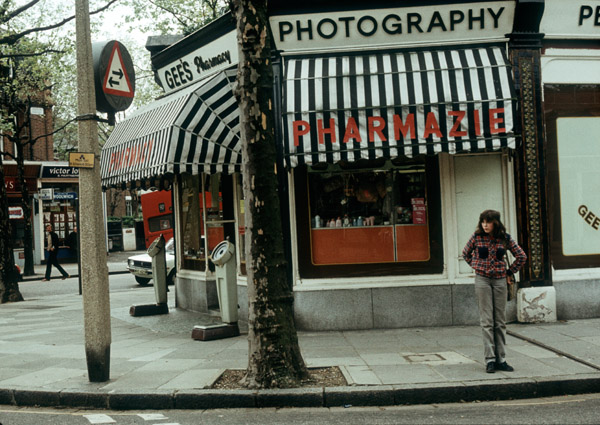
‘Photography’ at Kew
With my first few months salary I’d bought a Russian SLR camera, a Zenith B, to replace the old Japanese Halina that had never really worked since I’d dropped it in the lake at Versailles five or six years earlier, and some black plastic sheeting to cover the windows and the other basic requirements – three trays, a developing tank, measures, thermometer etc. Getting equipped was made easier by mail order, and the previous year living in Leicester I’d got to know the small photographic Aladdin’s cave of Jessops, with the catalogue on a large sheet of very small type – they sold a 10p magnifier with it. Another mail order company was Polysales of Goldalming, with a catalogue which had some useful advice in it as well as the goods.
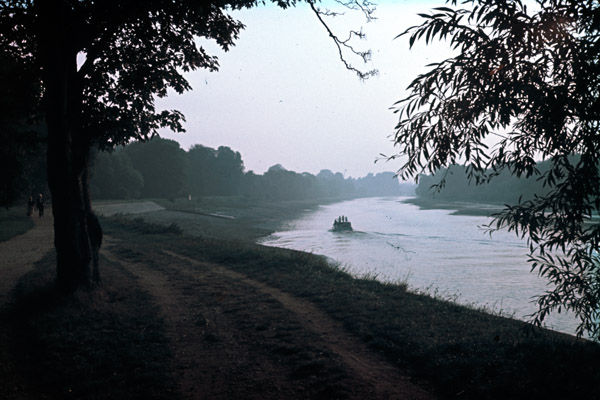
River Thames near Kew
Colour became a sideline, and of course most professional work was then in black and white. My first work was for a local theatre company, and the pictures they wanted were b/w also. Colour was still something largely for family pictures and holiday snaps.
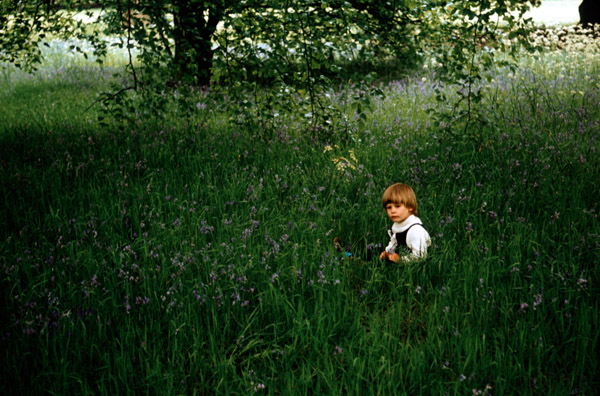
Sam in bluebells at Kew
Soon after I entered a competition in one of the amateur photographic magazines, and as a prize won 20 rolls of Kodachrome to make an entry into a tape-slide contest. I decided to base my entry on a cycle tour along the Loire Valley, and some of the pictures weren’t bad, but I had no experience and pretty poor equipment to make the sound-track. That was a competition I didn’t win.
But I did begin to use colour as well as black and white film, carrying two Olympus OM bodies (or a Leica and an OM) one with b/w and the other with colour slide film. I soon switched to E4 and then E6 films and cut costs dramatically by processing those myself. But black and white remained the serious side of photography, with colour only being a minor side of my work.
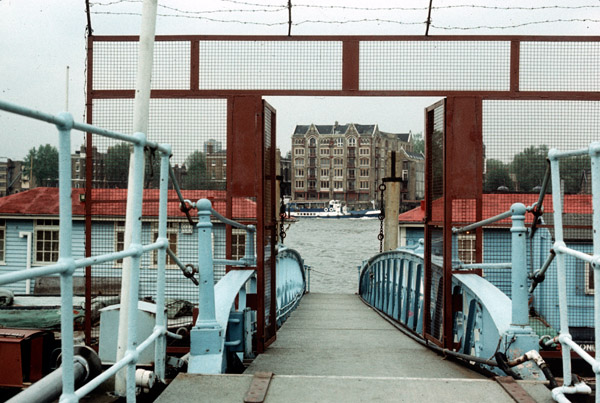
Cherry Gardens Pier and view to Wapping
I studied colour too, both with the Bauhaus book ‘The Art of Colour‘ by Johannes Itten and also works by photographers including Andreas Feininger, though I found these less interesting. Much of my colour photograph was just about colour, with the subject matter being immaterial, and most of this I now find of little interest.
Colour really only began to work for me when I began to use it for documentary subjects, at first along with black and white in my work on Hull, Germany and the Royal Docks. It was really only when I changed from colour transparency to colour negative in the mid 1980s that I started on projects that were only in colour; before then I’d found the technical deficiencies of colour transparency too limiting.
The images here were I think all taken in 1979, and these reproductions are all from scans made in 2002 which I came across on an old hard disk from a computer I’d getting ready to throw out as it will no longer start up, probably because of damage caused by overheating when a fan got blocked by dust. But the hard disks are still readable and I’ve removed those on to my backup shelf.
The slides had aged a bit when I scanned them, and some were rather dirty. I’ve tidied them up a little and adjusted contrast and colour balance roughly before posting.
Continue reading My Seventies Colour
